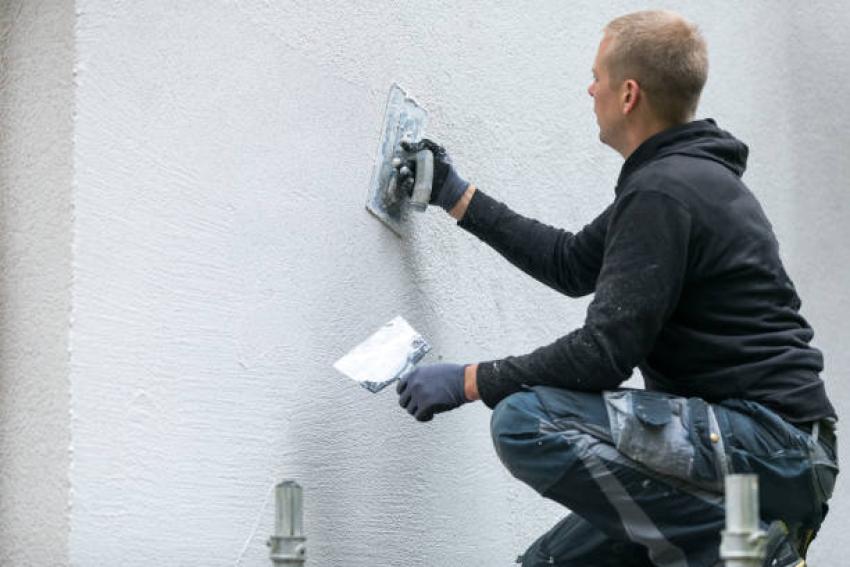
When a Small Patch Stands Out Big: A storm knocks a branch against your wall. Now, a small patch glares at you every time you pull in. You wonder if a contractor can make that spot disappear. The truth is, texture is the first thing our eyes notice. Even a perfect color can look wrong if the pattern is off. However, skilled teams can read your wall like a map. They study mix, aggregate, and hand motion. Then they test tiny samples until the pattern blends. With Houston stucco contractors, you get a methodical plan that hides repairs without costly rework. Let’s walk through how the best matches happen—and how you can help.
Houston Stucco Contractors: Texture Matching Matters After Damage
Texture sets the wall’s rhythm. If the rhythm breaks, your eye jumps to the patch. Matching isn’t only about looks, though. A good match also manages drainage and breathability. Therefore, pros start by identifying the original system: traditional three-coat, EIFS, or one-coat. They also note the sand size, application tools, and finish style. Then they mock up a small swatch next to the damage. This careful approach avoids spreading a mismatch across a larger area. With stucco contractors, your crew treats the surface like a fingerprint. Because they respect that “print,” the final blend feels natural from the curb and the porch.
What Pros Look At Before They Start
Before trowels touch the wall, a tight checklist saves time and money.
- System type: Three-coat, EIFS, or one-coat products
- Aggregate size: Fine, medium, or coarse sand profile
- Moisture path: Weep screeds, control joints, and flashings
- Substrate health: Cracks, rust stains, or delamination
- Sun and shade: Weathering patterns that change color and sheen
Next, crews take photos in both morning and afternoon light. A dampened test spot shows how the wall darkens. These small checks guide mix and timing. With Houston stucco contractors, preparation is deliberate, ensuring the finish blends seamlessly without looking patched.
Tools and Techniques for Common Textures
“Texture is movement set in stone—match the motion, and the wall stops telling on you.”
Pros match both material and motion. The same mix can read differently if the hand speed or angle changes. That’s why technique matters.
Sand Finish (Float)
Teams float the surface with a sponge or rubber float in tight circles. They chose sand to echo the original grit.
Dash or Splatter
Contractors use a dash brush or hopper gun, tuning air pressure and nozzle size. They layer passes to copy the density and random pattern.
Lace (Skip Trowel)
Crews roll or spray a thin slurry, then “skip” a trowel lightly. Timing is key: too wet and it smears; too dry and it tears. Houston stucco contractors prepare by mocking up techniques on scrap boards and adjusting them on discreet spots before moving to the full surface.
Color Matching and Weathering Tricks
Color is more than a code on a bucket. Sun, rain, and age mute pigments and shift tone. Therefore, pros often tint the patch slightly warmer or cooler to meet the current wall, not the day-one color. They also feather edges beyond repair. This soft halo avoids a hard color border under raking light. For older walls, crews may do a light mineral wash to unify sheen. Finally, they check the match at dawn, noon, and dusk. Each light angle reveals different shadows in the texture. With stucco contractors, the match you approve at noon still looks right at sunset.
Small vs. Large Patches: A Quick Table
Before you choose a repair path, compare scope, time, and risk side by side.
Scenario Best Approach Why It Works Owner Tip
Hairline chip (palm size) Local patch + feather coat Keeps repair tiny and tidy Approve a small on-wall mockup
Mid-panel damage (1–3 ft) Texture blends into the nearest joint Hides the transition in a natural break Photograph in the morning and evening
Wide damage (3–8 ft) Panel-to-panel blend= Prevents “island” look Budget time for the color aging test
Because the table frames real-world choices, you can set the right scope with your crew. With Houston stucco contractors, you receive clear guidance before work begins.
Homeowner Checklist to Help the Match
You can play a significant role in success. A little prep improves results.
- Share any leftover finish, color codes, or past invoices
- Point out areas that still match the original look best
- Schedule repairs when the forecast is mild and dry
- Move sprinklers and landscaping away from the wall
- Approve a test patch in place, not only on a sample board
- View the mockup at two distances: 6 feet and curbside
These steps reduce guesswork and protect fresh work as it cures. Together, they set the stage for a near-invisible repair.
Cost, Timing, and What to Expect on Site
Most texture matches finish in a day or two, plus cure time. Small patches take a few hours, while mid-panel blends need more setup. Costs depend on access, finish type, and whether the color requires a custom tint. Crews usually protect windows, tape trims, and set ground cloths. Houston stucco contractors mix small batches to keep the texture consistent, then allow coats to firm before floating or skipping the trowel. Finally, they clean the site and review the match with you in a different light. With this approach, you get transparent steps and clear updates—so there are no surprises.
“Quick is nice; cured right is better.”
Preventing Future Cracks and Blisters
Prevention starts with water control and movement control. First, keep gutters clear and downspouts away from stucco. Then, trim sprinklers so they don’t soak the wall. Next, caulk joints where dissimilar materials meet, like stucco to window frames. Finally, watch for hairline cracks after big temperature swings.
- Protect edges: Kick-out flashing and weep details clear water
- Mind movement: Control joints relieve stress across large walls
- Seal wisely: Use breathable sealers when needed, never trap moisture
These habits help the new patch age with the old fence, not against it. With stucco contractors, your repair includes tips that extend the life of the finish.
A seamless patch is equal parts science and craft.
When teams study your wall, test small, and match motion as well as mix, the repair blends into the story of the house. If you’re ready to stop seeing the patch and start seeing the whole home again, ask for on-wall samples, check them at different times of day, and approve the plan that fits your budget and timeline—R&M Stucco will bring steady hands and clear steps to help your exterior look whole, strong, and beautifully consistent.



